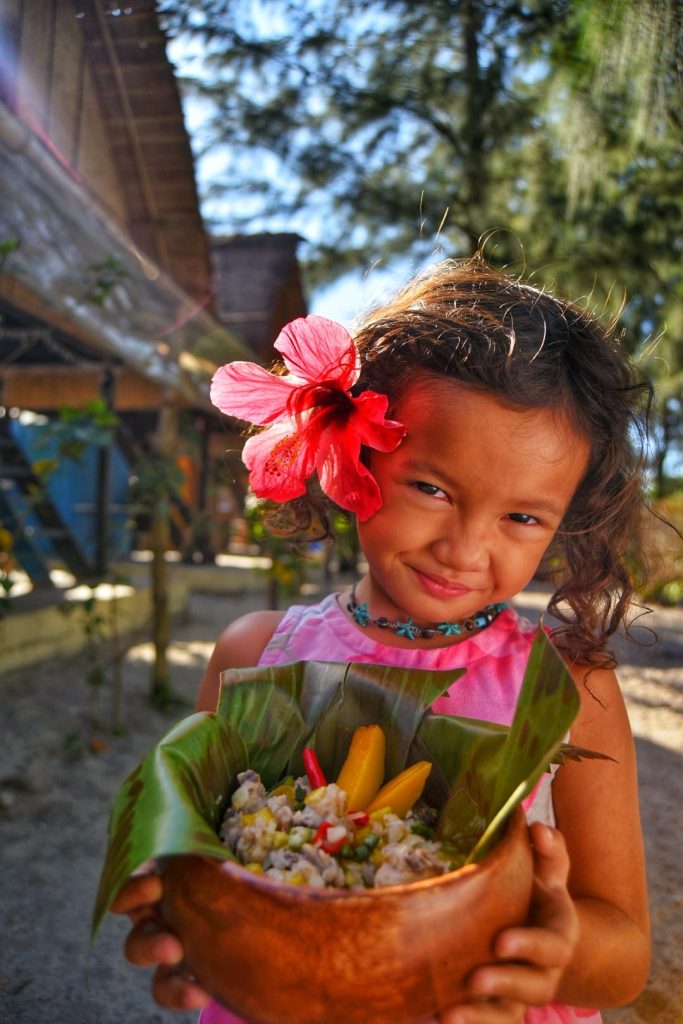One of the most intriguing culinary creations that can be regarded as a shared cultural legacy is the always captivating kilaw (cquilao).
In the southern region of the Philippines, it is customary to prepare kinilaw, a dish consisting of raw fish marinated in vinegar and accompanied by a couple of vegetables. This culinary practice bears a resemblance to the Kapampangan dish known as quilo, whereby either raw dilis or bangus is marinated in vinegar. By incorporating chili peppers and onions, additional dimensions of flavor are introduced.
On the other hand, the terms “quilo babi” and “sisig” are oftentimes used interchangeably to describe the pig’s boiled ears and maskara, which are soaked in nipa palm vinegar and served with onions and chiles seasoned with salt and crushed pepper. These terms are frequently employed by communities residing in the lower Pampanga region. Kilaw and quilo have been identified as potential antecedents of the internationally renowned delicacy known as sizzling sisig, which originated in Angeles City, located in the upland Pampanga area.
The earliest description of cquilao is from 1609: “to put greens in vinegar with salt”, similar to the Fray Bergano entry of the Kapampangan-Spanish Dictionary created in 1732, which is called sising (the entry is sising and not sisig). Sising (sic, sisig), according to the dictionary, is a noun defined as “a salad, including green papaya or green guava, is eaten with a dressing of salt, pepper, garlic, and vinegar”.
-Ruston Banal referencing Felice Sta.Maria and Fray Diego Bergano
The earliest description of cquilao is from 1609: “to put greens in vinegar with salt”, similar to the Fray Bergano entry of the Kapampangan-Spanish Dictionary created in 1732, which is called sising (the entry is sising and not sisig). Sising (sic, sisig), according to the dictionary, is a noun defined as “a salad, including green papaya or green guava, is eaten with a dressing of salt, pepper, garlic, and vinegar”.

Bergano also has an entry for quilao (read as quilo), which is defined as a young deer (like cua), cub, or whelp that is eaten as minced meat cooked rare (refers to doneness). The form and content of the dish are similar to the modern-day sisig that has meat in it.
According to the book Manila Galleon: Crossing the Atlantic, published through a grant under the National Historical Commission of the Philippines in 2014, kilaw, from where the Tagalog word hilaw came from, is the knowledge and skill of preparation, which is so widespread that every province, every town, profess theirs is the best kind there is. Kinilaw has permutations and combinations of main ingredients, souring agents, and spices.
Archeological evidence, dated between the 10th and 13th century AD found in an excavation site in Butuan City, Agusan Del Norte, uncovered a preserved “tabon-tabon”, a fruit from which a souring substance is squeezed into kinilaw. The manner by which the fruit was cut in halved and its physical association with fish bones bolster the idea that kinilaw may have been practiced by early dwellers of the Philippine island.
Sources:
- LES PHILIPPINES by Jean Mallat, Volume 1, published in 1846 in Paris, France.
- The Manila Galleon: Crossing the Atlantic. “Flavors of Freshness”, page 18. Edited by Edgardo Angara, Jose Maria A. Carino, and Sonia Pinto Ner, published through a grant by the National Historical Commission of the Philippines. 2014.
- Vocabulary of the Kapampangan Language in Spanish and Dictionary of the Spanish Language in Kapampangan
- By Fray Diego Bergano. Manila. Published in 1732.
- Pigafetta’s Philippine Picnic: Culinary Encounters During the First Circumnavigation, 1519-1522 as retold by Felice Sta.Maria. Published by the National Historical Commission of the Philippines. 2020
